By Benjamin R..feb 16, 2023

Azure, Microsoft’s Public Cloud Computing Platform, is used by companies of all shapes and sizes to build applications on a global scale. From start-ups that want to reduce the infrastructure costs in advance to companies that want to relax products to market faster, Azure offers a wide range of cloud services that help companies achieve their business goals. With services for calculation, networks, analyzes, storage and more, companies can implement distributed, scalable infrastructure. Butse Services also introduces complexity, because teams need visibility in every layer of their infrastructure to efficiently diagnose performance problems.
Deep visibility in On-Prem, Hybrid and Multi-Cloud Environment
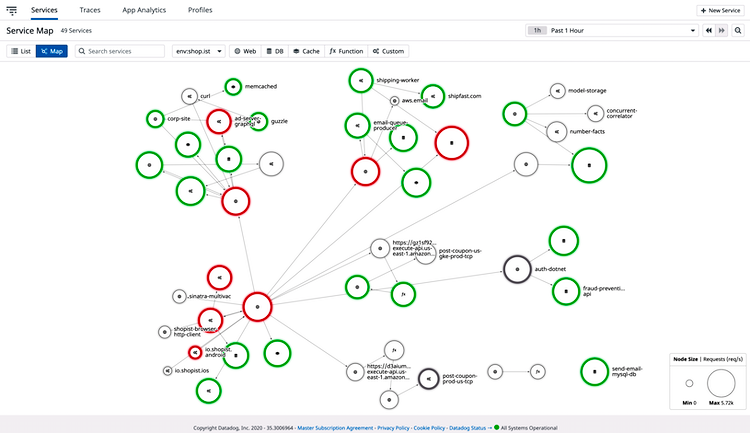
As organizations migrate from on-premise to hybrid or multi-cloud environments, they sacrifice relevant to multiple monitoring tools for end-to-end visibility. This creates data silos and limits in their ability to make problems with Trebilot and successfully migrate their workloads. DataG unites perceptibility data of each VM and service and offers extensive, platform -dependent visibility in critical applications. Teams can visualize the dependencies between their on-premise and cloud databases, VMs, containers and more with the service card of Dateag, they emphatically follow the data that flows across the borders.
How can I implement Azure?
Using Azure CLI
First log in to the Azure account that you want to integrate with Datédag:
az login
Perform the Assignment Account Show:
az account show
Enter the generated Tenant ID Value in the Azure Integration Tile data under tenant name/ID.
Make an application as a main using the size:
az ad sp create-for-rbac --role "Monitoring Reader"
--scopes /subscriptions/{subscription_id}
- This command grans the main service de
monitoring readerRoll for the subscription that you want to check. - The
appIDGenerated from this assignment, the Azure integration tile must be among the client -ID -ID. - Add
--nameTo use the hand -chosen name, Azure generates differently to unique. The name is not used in the installation process. - Add
--passwordTo use the Mistic password. Otherwise, Azure generates to unique. This password must be entered in the Azure Integration Tile data under Client Secret.
Integration via the Azure Portal
- Make an app registration in your Active Directory and pass on the right references to Datag.
- Give the application of the application for all subscripts that you want to check.
Make the app registration
- Under Azure Active Directory, Naviger to App Registrations and click on New Registration.
- Enter the following and click Make the Make. The name and registration URL are not used, but are required for the installation process.
- Yam:
Datadog Auth - Supported account types:
Accounts in this organizational directory only (Datadog) - Direct Uri:
app.datadoghq.com
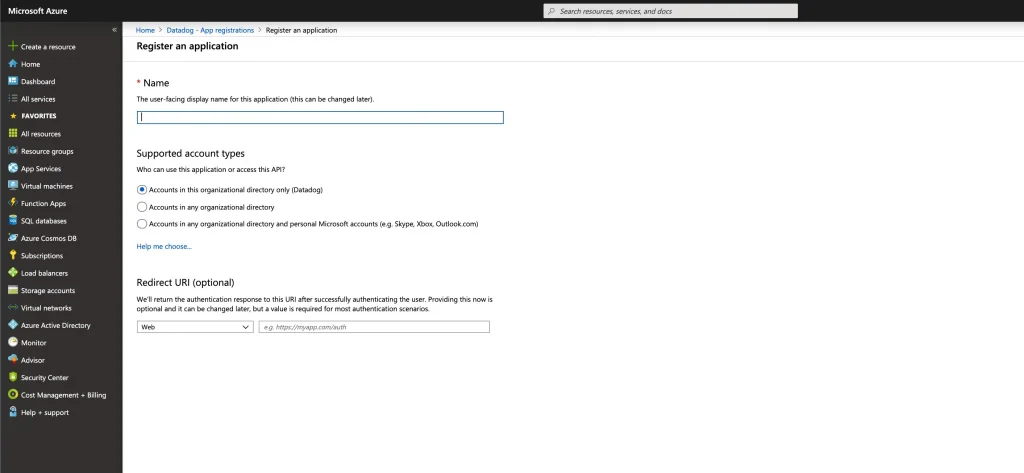
Give reading rights to the application
1. Navigate to subscripts via the search box or the left sidebar:

2. Click on the subscription that you want to check.
3. Select access control (IAM) in the subscription menu and click Add> Roll order: Add:
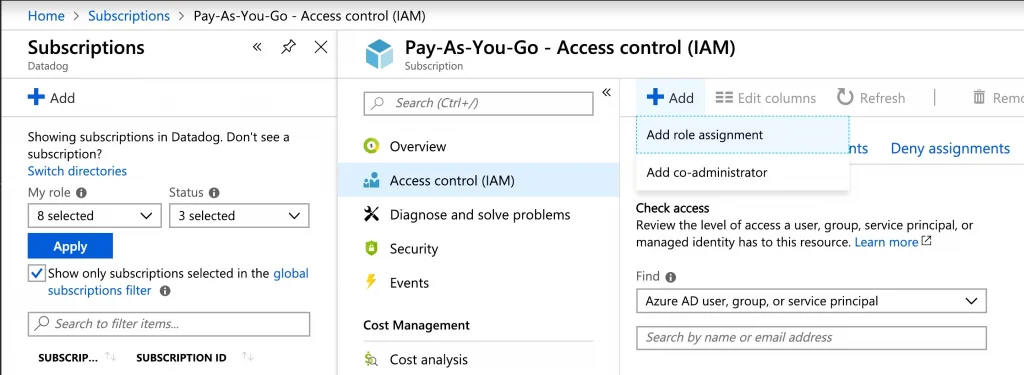
4. Select Monitoring Reader for the roll. Under Select the name of the application you have just made: Select:
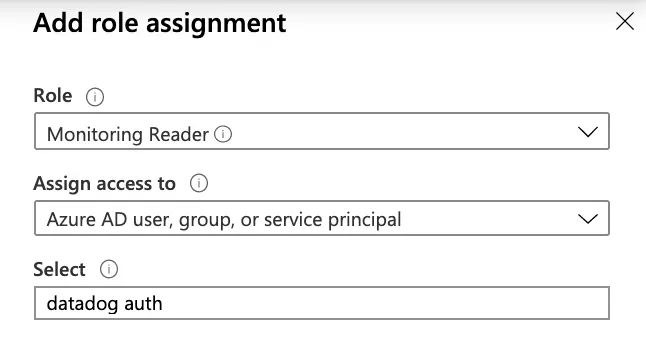
5. Click Save.
6. Repeat this process for extra subscriptions that you want to check with Datag. Note: Users of Azure Lighthouse can add subscriptions of customers of customers.
NOTE: Diagnostics must be engaged for Arm -GeMplemented VMs to collect statistics, see insufficient diagnoses.
Integration
- Under App Registrates, select the app you have created, copy the Application ID and the Tenant ID and paste the values in the Azure Integration Tile Datag under Client ID and tenant -ID.
- For the same app, go to managing> certificates and secrets.
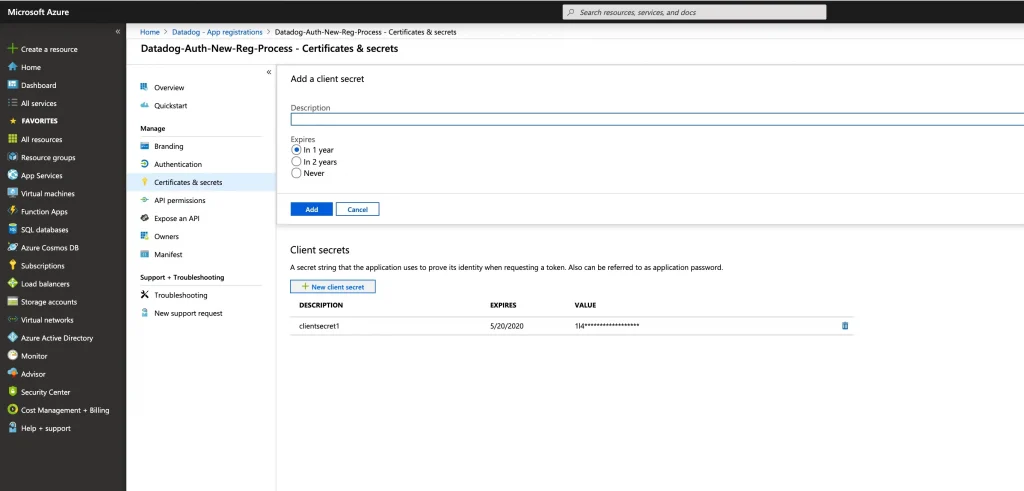
3. Add a new client secret street datadogClientSecretSelect Timetable for the expiry and click Add:
4. When the key value is displayed, copy and paste the value in the Azure Integration Tile data under Client Secret and click Install Install or Update Configuration.
Agent installation
You can use the Azure extension to install the data agent on Windows VMS, Linux X64 VMs and Linux-arm-based VMs.
- Navigate in the Azure Portal to your VM> Settings> Extensions> Add data day agent and select.
- Click Make, enter your Data API key and click OK.
Consult the installation instructions from Datag Agent to install the agent based on the operating system or CI and CD tool.
Note: Domain controllers are not supported in installing the data agent with the Azure Extension.
Validation
It can take a few minutes for statistics to appeal under the new subscription.
Navigate to the AZURE VM Standard Dashboard to see this dashboard are filled with the data of your infrastructure:
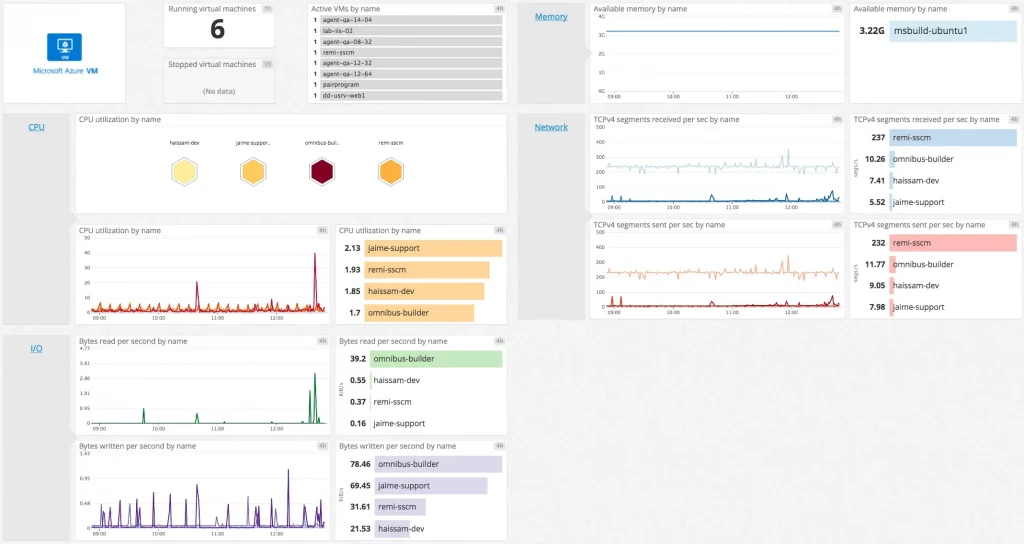
The original article published on medium.

